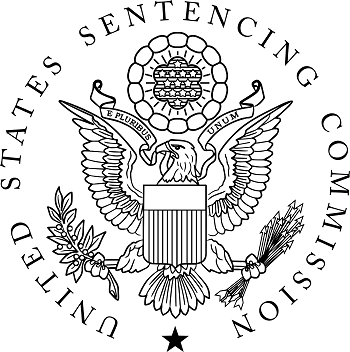August 23, 2018
Contact: Office of Legislative and Public Affairs
press@ussc.gov | (202) 502-4500
U.S. SENTENCING COMMISSION ADOPTS POLICY PRIORITIES FOR 2018-2019 AMENDMENT YEAR
WASHINGTON, D.C. (August 23, 2018) — The United States Sentencing Commission today approved a list of policy priorities for the coming year, including expansion of several multi-year projects examining sentencing practices and their outcomes within the federal system. Watch the public meeting.
As its top priority, the Commission announced that it will continue its multi-year examination of the current federal sentencing structure. Circuit Judge William H. Pryor Jr., Acting Chair of the Commission remarked, “This amendment year, the Commission will research the differences in sentencing practices that have emerged across districts, within districts, and, in some cases, within courthouses under the advisory guidelines system.” Since 2014, the Commission has explored avenues to simplify and strengthen the guidelines and bring greater certainty to sentencing.
For the third consecutive year, the Commission also set as a priority the adoption of a uniform definition of “crime of violence.” In 2016, the Commission revised the guideline definition of a “crime of violence” and published several key findings and statutory recommendations in its 2016 Report to Congress on Career Offender Sentencing Enhancements.
In its public comment, the Department of Justice raised several application issues that have arisen since the Commission’s 2016 amendment, including the meaning of “robbery” and “extortion.” In addition, the Department raised issues arising from the treatment of inchoate offenses and offenses involving an offer to sell a controlled substance. The Commission intends to address these concerns during this amendment cycle. In response to additional concerns raised by the Department and the significant litigation brought about by the “categorical approach,” the Commission also will consider possible amendments to section 4B1.2 to allow courts to consider the actual conduct of the defendant in determining whether an offense is a crime of violence or a controlled substance offense.
The Commission will also continue to study recidivism outcomes among federal offenders as well as the use of mandatory minimum penalties in the federal system. Over the past two years, the Commission released eight reports on those topics. This amendment year, additional recidivism reports will be released. The Commission will also issue reports on the use of mandatory minimums in cases involving identity theft and sex offenses.
Judge Pryor observed, “The Commission has a unique statutory responsibility to act at the intersection of all three branches of government as a clearinghouse of federal sentencing data. We are pleased that the Commission's research and data has proven useful to ongoing sentencing policy deliberations, and we remain prepared to work with Congress to implement our recommendations should Congress decide to act.”
In light of the Supreme Court’s decision in Koons v. United States, the Commission will also consider application issues related to the calculation of retroactive sentence reductions for certain offenders convicted of mandatory minimum penalties.
The Commission will also study revocations, such as those for technical violations, and their impact on criminal history. Finally, the Commission will determine how to implement recent legislation into the guidelines.
Annually, the Commission identifies policy priorities to review, analyze, and revise the federal sentencing guidelines in accordance with its statutory authority and responsibility. The Commission published tentative priorities and invited public comment in June.
A complete list of final priorities may be found here and in an upcoming edition of the Federal Register.
# # #
The United States Sentencing Commission, an independent agency in the judicial branch of the federal government, was organized in 1985 to develop a national sentencing policy for the federal courts. The resulting sentencing guidelines provide structure for the courts’ sentencing discretion to help ensure that similar offenders who commit similar offenses receive similar sentences.
